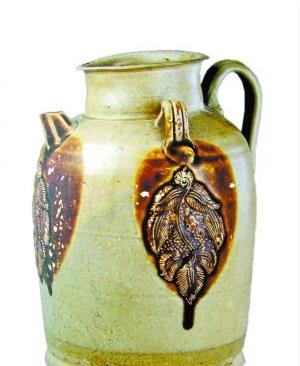 The Changsha Kiln is located in Tongguan Town, Wangcheng County, Changsha City, Hunan Province. It was also known as the "Tongguan Kiln," and the kiln site was discovered in 1956. It was discovered in 1964 and excavated again in 1983. The underglaze painting of Changsha Kiln Celadon began firing in the period of Emperor Tang Xianzong (806-820 AD) and continued until the late Tang and Five Dynasties. It flourished for 140 years.
The Changsha Kiln is located in Tongguan Town, Wangcheng County, Changsha City, Hunan Province. It was also known as the "Tongguan Kiln," and the kiln site was discovered in 1956. It was discovered in 1964 and excavated again in 1983. The underglaze painting of Changsha Kiln Celadon began firing in the period of Emperor Tang Xianzong (806-820 AD) and continued until the late Tang and Five Dynasties. It flourished for 140 years. The products of Changsha Kiln are mainly bowls, plates, pots, cans and pots. The varieties are relatively single. In the later period, in addition to adding daily appliances such as mattresses, pillows, and chin trays, the abdominal body is full-circled, short-necked, and short-flowing. By the late Tang and Five Dynasties, its abdomen was turned into a melon belly, with a slender neck, a circular tube, and double handles, showing a line art of charm and artistic conception. The pillow is typical of Changsha Kiln Celadon underglaze paintings. The shape of the pillow is small, square, oblong, waist-shaped and animal-shaped.
Changsha kiln painting under the glaze, the early color is relatively monotonous, only underglaze brown color, or glaze under the green color, followed by brown, green two-color, or brown, green, red and a variety of colors and the situation. Due to the alternating or repeated use of these colors, the color produces a variety of effects, and uses the principle that the glaze penetrates with the porcelain and porcelain at high temperatures, forming a deep shade of light. The ornamentation is also transformed from a simple geometric pattern composed of spots into a picture depicting flowers, birds, figures, landscapes, and poetry. Although these pictures are simple, they are harmonious with artistic conception. They are full of vitality. They integrate Tang Dynasty flower and bird painting and calligraphy art into ceramic decoration, and integrate natural ecology into the pattern program, opening up a broad approach for the later painting of porcelain.
Changsha Kiln Celadon has a rich collection of underglaze patterns, including figures, flowers, birds, flowers and various animals. Birds have geese, long-tailed birds, phoenixes, birds, etc.; flowers and plants have lotus, Bao Xianghua and so on. Among the various patterns, animals, flowers and birds are the most distinctive, and bird painting is the most artistic. In the painting technique, the kiln under the celadon enamel is painted under the glaze, and the rough shape is often used to draw out the general shape. Then, the detailed outline of the kiln is drawn with a thin line, and the no-bone drawing method is used for the grass and branches. In Changsha Kiln, for example, the abdomen flower and bird pattern is a bird with a long tail, and a few branches of the sparse flower. Birds are outlined with thick green lines, while mouths, wings, and feathers are depicted in brown color. The leaves are outlined with brown bones, and in the middle are filled with green color. Although the whole picture is a few strokes, the bird's demeanor is vivid and vivid.
With poetry and calligraphy as a decoration of porcelain, the subject matter is quite rich, and it is also a major feature of the underglazed painting of Changsha Kiln in the Tang Dynasty.
In Changsha kiln porcelain, in addition to underglaze painting, mouldings, decals, and other decorative tools are also used, that is, the pattern is applied to the abdomen of the utensils, and painted with brown colored spots.
Work Pants For Women,Best Work Pants,Work Pants Knee Pads,Cargo Work Trousers
Work Shirt,Softshell Jacket Co., Ltd. , http://www.cnworkshirt.com